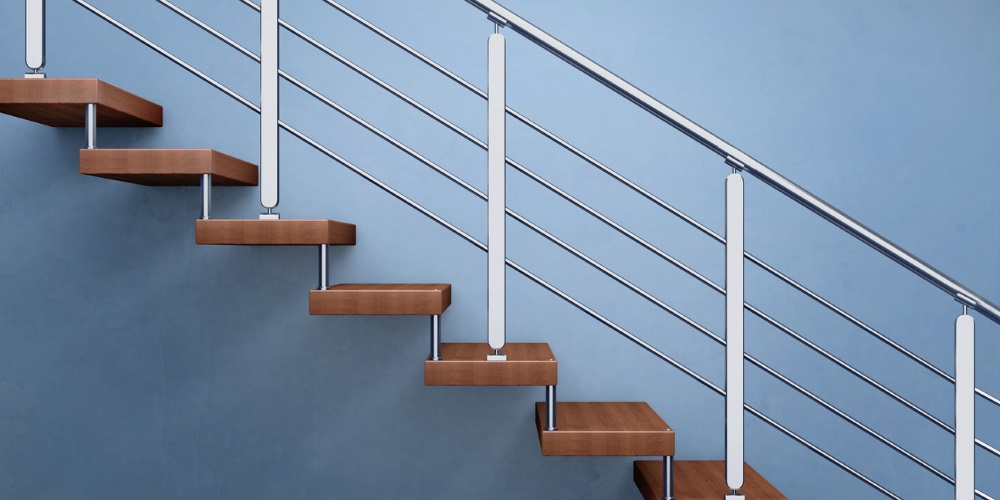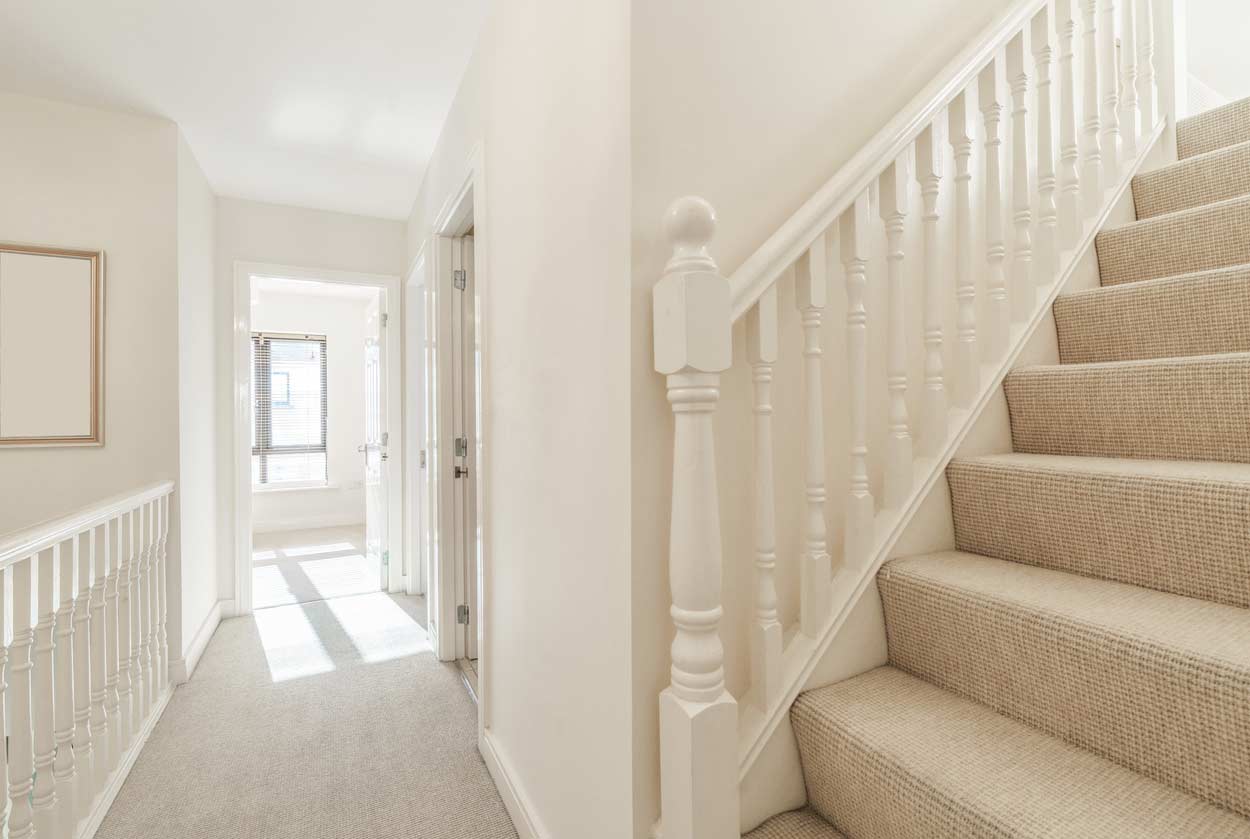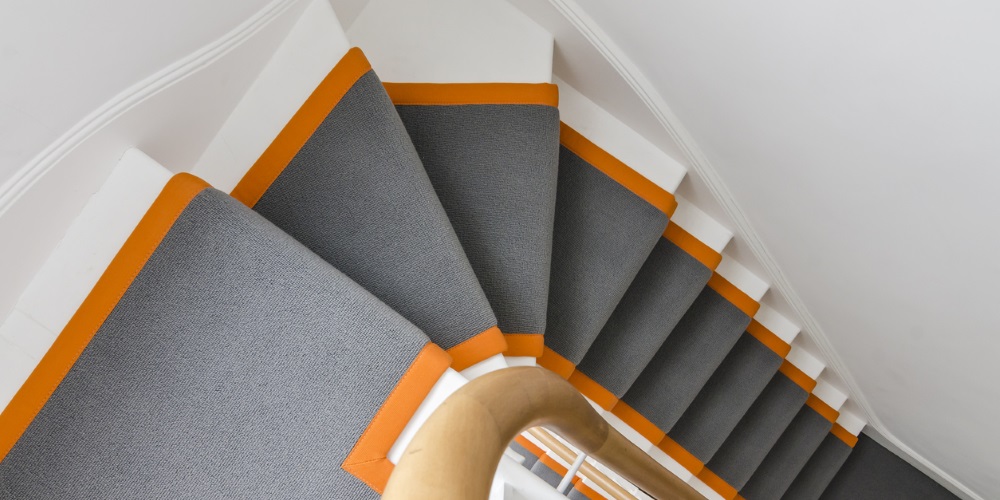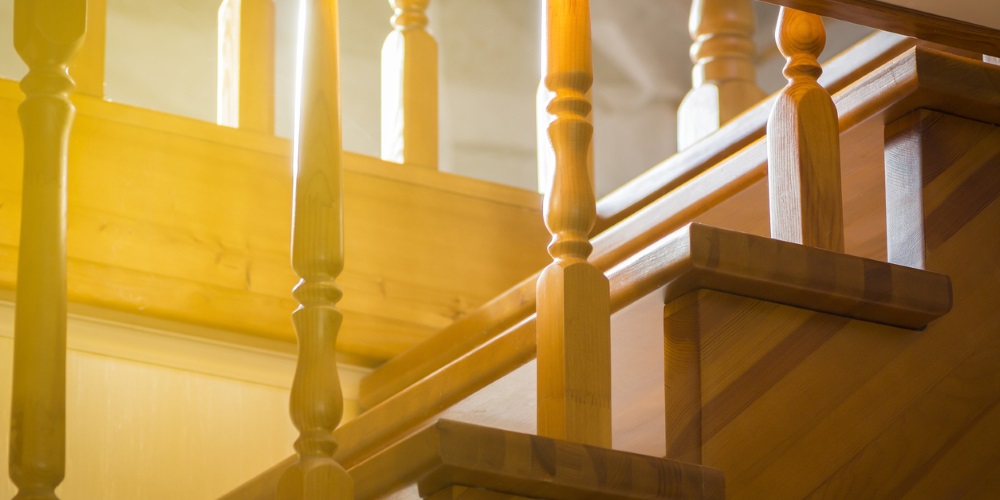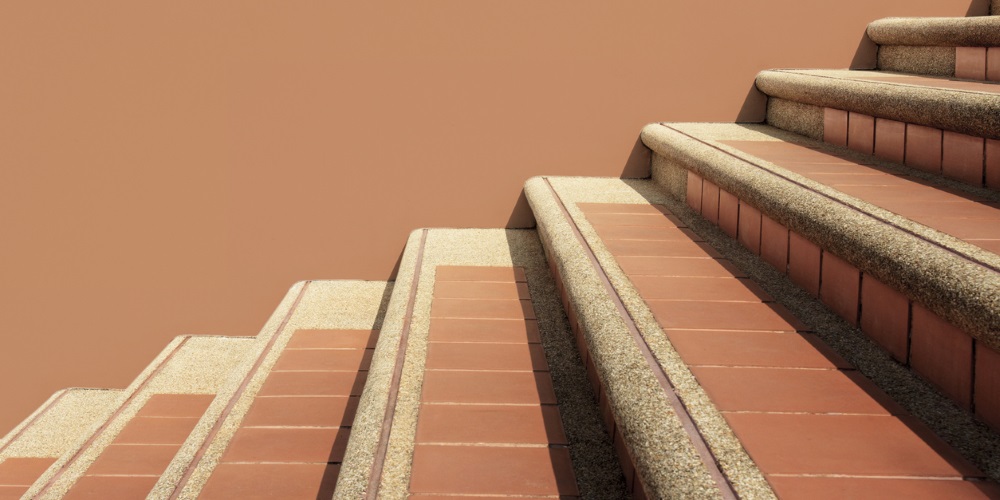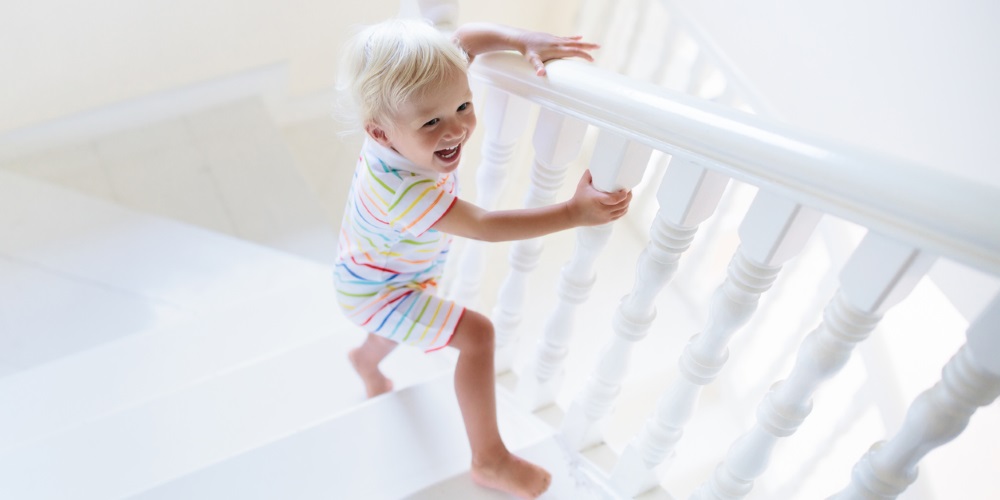Advice on styling fully carpeted stairs
Steph: Fully carpeted stairs look fabulously neat and modern as well as being great if you’ve got an older staircase which can be draughty. Fully fitting a carpet can prevent it from being a trip hazard and in most houses there is a noticeable noise reduction.
As the staircase is a high traffic area, I’d recommend a hardwearing carpet such as sisal or coir. Style wise if the rest of the hall and landing is hard flooring then I’d be tempted to make the stairs the main feature. Stripes, patterns and statement colour can work well for this
Tom: Fully carpeted stairs are the default for most homeowners. They can provide a generally practical and hardwearing surface, comfort under foot and can offer immediate impact and a visual change for those seeking an update to their interior. However, carpeted stairs are somewhat ingrained in tradition when there are alternatives that can be just as practical and create a real wow factor in the home.
The first thing to consider is usage. Is your home a busy space? Is it full of teenagers, children, dogs and cats or is it a quieter environment? A carpet, just like other fixtures and fittings must suit your needs and lifestyle. Since stairs are a high traffic area any floor covering must be of robust quality. Spending a little more money on a stair carpet will undoubtedly pay you back with longevity. However, these don’t have to break the bank. A low, dense pile will offer longevity and is forgiving, hiding footprints and marks left behind from the hoover. Also, the colours and patterns available are endless. Whilst a cheaper Berber woven style carpet will not only give you durability but as a neutral covering with a gentle texture can be paired with most interior styles.
Gilly: The choice on whether to carpet your staircase or go for another type of treatment really depends on how the stairs have been constructed, the materials and the condition. Sometimes fully carpeting the stairs is the only option. If this is the case, then go for a loop pile carpet rather than a cut pile. If then the pile flattens over time, if won’t be so obvious. A stripe in the carpet gives a pleasing finish and makes the stairs more of a design feature.






